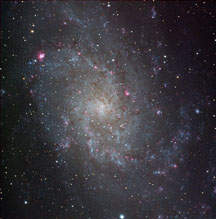I normally can’t see the Triangulum Galaxy (M33) with the naked eye, but it’s easy in a rich-field telescope. So how can you claim (June issue, page 128) that a telescope never increases an object’s surface brightness?

Dennis di Cicco
The explanation has nothing to do with optics and everything to do with human vision. The telescope does not enhance M33’s surface brightness, but it makes it appear so much bigger that you can see it. A classic 1946 paper by H.R.Blackwell, based on wartime research, revealed that in very dim light the eye has better contrast sensitivity if an object has a large angular size (greater than 3° in some cases). Roger N. Clark explores this topic in his book Visual Astronomy of the Deep Sky (1990).
The defining moment came for me when I was trying to locate the Owl Nebula (M97) in Ursa Major with a 4 1/4-inch reflector. Try as I might, I could not find M97 at 17×. But when I changed to 85×, there it was! I switched eyepieces back and forth to confirm this unexpected effect. The higher magnification surely darkened the view, reducing the surface brightness of both nebula and sky, but that was the only way I could see the Owl in that telescope.
— Roger W. Sinnott
 0
0







Comments
You must be logged in to post a comment.